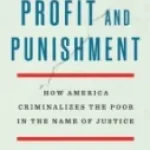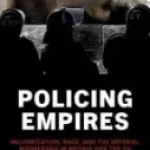Policing Gun Violence Strategic Reforms for Controlling Our Most Pressing Crime Problem
 Authors: Anthony A. Braga & Philip J. Cook
Authors: Anthony A. Braga & Philip J. Cook
Publisher: Oxford University Press, 2023. 240 pages.
Reviewer: Nathan Connealy | April 2024
Crime trends over the last few years indicate that the US violent crime rate is on the rise, a phenomenon not experienced since the early 1990s. The observed rise in violent crime also coincides with a seemingly increased frequency and hyperawareness of mass shooting events, which occur at institutions like schools and public events at a unique and alarming rate in the US. In many ways, the previously mentioned issues of rising violent crime rates and mass shootings source back to one thing: guns. For cities across the US, guns and gun violence are the most pressing crime problem they face. Further complicating matters, gun violence problems have become exacerbated amidst an especially contentious socio-political climate that has pressured law enforcement to respond while simultaneously calling into question their budgets and goals in activist-centered “defund” movements. The issues sourced by gun violence are real and identifiable, though the role of law enforcement in addressing such issues has been less than straightforward in the 21st century. The stakes are obvious, but for too long, the answer has not been clear.
In Policing Gun Violence: Strategic Reforms for Controlling Our Most Pressing Crime Problem, the authors attempt to tackle some of the most demanding and elusive issues plaguing the present climate. As the title suggests, these issues routinely sit at the intersection of both “policing” and “gun violence.” Their overarching contention is that, even amidst a tumultuous and changing social climate surrounding police perceptions, policing still remains the best way forward in reducing community gun violence. The book goes on to provide a framework for both police and communities to overcome relational challenges to mitigate or potentially even eliminate gun violence. Solutions are proposed through a series of strategic steps laid out with accompanying case-study site examples and implementation protocols to increase the chance of future replication and success. The book has a highly local emphasis and suggests combining place-specific, focused deterrence strategies aimed at at-risk individuals and increased operational and investigatory capacities could improve local law enforcement efforts in combating gun violence.
If the book comes up short in any area it is that the reform strategies suggested are not new to police or communities. Agencies have long been in the throws of hot spots policing practices and already know their operational and investigatory deficits. However, this limitation in solutional innovation is overcome due to the incorporation of overwhelming evidence underscoring the effectiveness of police in reducing crime using these pre-established practices. The authors point to what empirical evaluation has identified that “works” and harken us back to the tried-and-true practices that have produced success. The book possesses the potential to positively influence readers across a diverse range of audiences, including both police and communities. There is space, and need, for police to be involved in local gun violence solutions.
The opening chapters of this book provide insights into the burdens of gun violence, both in terms of societal costs (chapter two) and challenges to governmental entities (chapter three) and law enforcement (chapter four) alike. The authors dutifully trace the arcs of crime, violence, and guns over time, while noting critical intersections in the form of moral panics and subsequent policies that have aligned the presently observed crime trends, the mounting issue of gun violence, and the incompatibility of law enforcement responses that earmarks the current gun violence problem seen today. The first section affords readers a relevant overview of US gun culture and how macro-level root causes and micro-level situational contexts have enabled gun violence to pervade across the entire country. The book wrestles with how the crime and gun culture created in the US has fostered a plethora of regulatory challenges and inconsistencies that hamstring many enforcement efforts, particularly at the local level. The concluding arguments of the opening chapter focus on how regulation and enforcement are not mutually exclusive endeavors, though, and that enabling local police to do upstream prevention may unlock some observable benefits.
The next section of the book, comprising chapters five to nine, highlights practices and strategies law enforcement can utilize to reduce gun violence. The highly local nature of the proposed solutions provides a blueprint for agencies seeking to follow the evidence in combating identified problems of gun violence. Chapter five outlines a framework for pairing hot spot policing with problem-oriented approaches to determine the most at-risk places in a city to deploy resources. Drawing on a wealth of prior scholarship, they argue that first identifying micro-level places and problems can motivate upstream law enforcement efforts to foster deterrence in at-risk groups (chapter six). In a similar vein to generalized aspects of crime and place research, shootings and gun violence can also be attributed to a select number of places and people within a jurisdiction. Covering a multitude of successful prior interventions, they cite a host of cities that have realized crime prevention benefits using a focused deterrence approach. Controlling high-risk groups, including gang-involved individuals and repeat offenders, can give law enforcement an upper hand by optimizing deterrence in the small percent of chronic offenders that may underly the existing gun violence problem.
Chapters seven through nine consider the operational capacities of law enforcement. Chapter seven highlights the need to strengthen investigatory resources, as case closure and solvability have long been goals of law enforcement that communities particularly rely on to draw their perceptions. Enhancing the tools and abilities of investigations to close shooting cases, especially those of the non-fatal variety, could have far-reaching impacts on community perceptions and participation in co-public safety alongside the police. This, in turn, may facilitate the added benefit of removing gun-propense, repeat shooting individuals from the streets due to improved investigatory practices. Chapter eight acknowledges that part of the gun violence problem is also the frequency by which police are involved in shootings. However, such officer-involved shootings may decrease with repeat shooting offenders incapacitated because of more effective interventions and investigations. Providing law enforcement with alternatives that reduce the likelihood of officer-involved shootings, both through the incapacitation of those individuals that generally drive such encounters and through improved training and accountability mechanisms within the institution, would likely create more alignment between police and communities in tackling the issues of gun violence. Although much less frequent than shooting events in the general population, officer-involved shootings tend to be far more salient. Reducing such shootings could create conditions more ripe for joint public safety initiatives. Chapter nine requires such a crossover as the underground gun market, and the trafficking of firearms illegally requires necessary intelligence often sourced by local community members. Relatedly, the primary drivers of illegal gun trafficking include straw purchasing and gun theft. Reducing community contributions to the problem can help disrupt illicit markets and the circulation of crime guns.
The close of the book in chapter 10 provides direction, and hope, in moving forward despite the continued proliferation of guns and violence. Gun violence is, as the authors suggest, a multi-faceted issue. However, the stakes are too high to remove law enforcement from the solution, an observation that is further reiterated across the closing paragraphs. In both a fair and objective manner that ties in past experiences and comprehensive scores of empirical evidence, the authors reach the conclusion that police matter in controlling gun violence. The book positions police to draw on a portfolio of effective programs that address gun violence hot spots, deal with high-risk and involved individuals, strengthen investigatory capacities, reduce officer-involved shootings, and disrupt underground markets. The solutions are realistic and actionable and can be readily implemented by law enforcement and communities who believe in following the evidence. Overall, interested readers who are impartial to the sometimes-loud debates of the pro-police or abolish-police camps, and who want to reduce gun violence, would benefit greatly from reading this book. There is a pathway forward in rectifying this issue, and Braga and Cook’s suggestions are critical to formulating that plan.
Nathan Connealy is an Assistant Professor in the Department of Criminology and Criminal Justice at the University of Tampa.


